Plants That Brighten the Night
Most of our flowering plants open their blooms as the sun rises. But there’s a special group of that flower at night, and they’re the ones I thought we’d highlight in this issue. I brought six of my favorites.
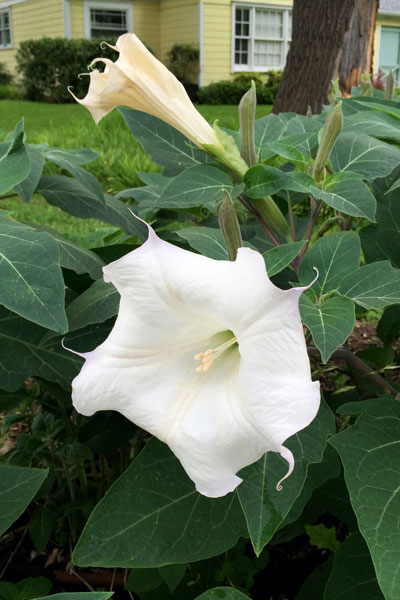
Moonflower, or angel’s trumpet. Ranchers call this plant jimson weed. It’s a Datura, and its fragrant flowers are borne slightly upward to outward. The pure white type is most common, but there is a purple and white variety in the market as well. Do note that this plant is toxic and should not be grown around children. It is a short-lived perennial that reseeds itself freely.
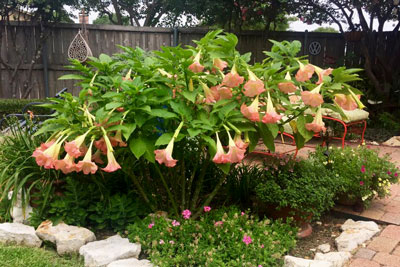
Brugmansia. This variety ‘Cherub’ gets my vote as the showiest of all night-flowering plants. My friend Carrie Bobela grew this in her backyard in Richardson. I wrote about Carrie here several years ago as she was rehabbing and raising box turtles in an effort to reintroduce them back into their natural habitats. This lady is really special! Brugmansias are not winter-hardy most years in DFW, but they are farther south.
Brugmansia is also called moonflower. Perhaps no night-flowering plant is so showy. This is a sub-tropical beauty that can grow to 8 or 10 feet tall and up to 8 feet wide. Its 10-inch-long flowers hang straight down, distinguishing it from the Daturas just mentioned. Flower colors include yellow, pink and white.
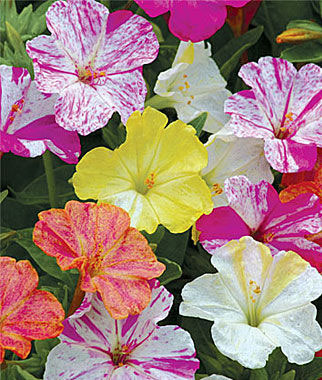
Four o’clocks. As the name suggests, these shrubby perennials bloom from late afternoon on through the night. Their flowers look somewhat akin to small petunias, and they’re produced in a wide variety of bright yellows, oranges, pinks and orchids. Many of the flowers are striped and two-toned, and it’s not uncommon for flowers of different colors to be produced on the same plant. Four o’clocks do best in afternoon shade and with ample moisture during the summer. They produce fleshy roots that carry the plants from one year to the next. (I couldn’t find my four o’clock photo after I finished my story, so I borrowed this one from the renowned Burpee Seed Company online catalog.)
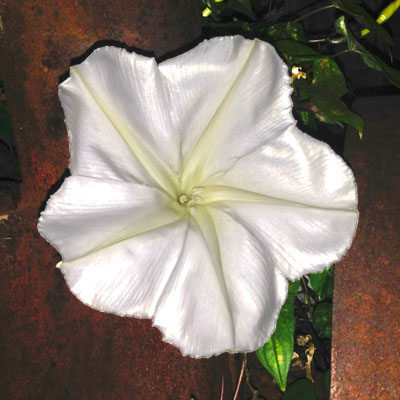
Moonvine. As soon as you see this lush, white-flowering vine you’ll know that it’s a sister to morning glories. Its petals are all joined, just like those of its day-blooming kin. But these buds open late in the afternoon, and they’re closed by mid-morning the next day. It’s a refined annual vine that is handsome climbing up trellises or spilling over fences.
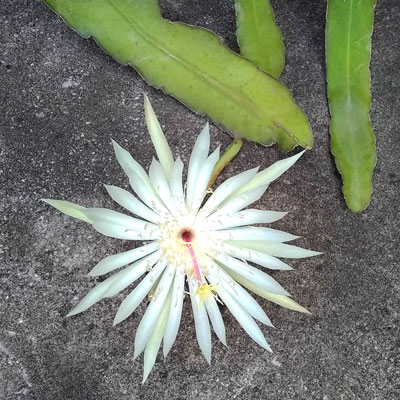
Night-blooming Cereus. A member of the Cactus Family, this one is epiphytic. That means it grows suspended in trees where it gains its moisture from rainfall and its nutrients from decaying organic matter that is captured in the crotches of old branches and leaves. Its white buds open to become massive foot-wide flowers that hang off the leafless stems overnight. Dozens are produced by each single plant every summer.
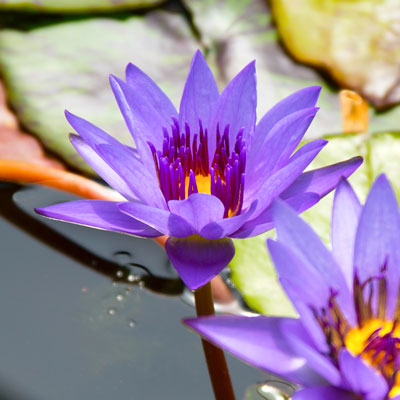
Tropical water lily. There are types of these spectacular water plants that open at dusk and close in the morning. I called my friend Mary Traveland at Dickson Brothers Pool and Water Gardens in Mesquite yesterday to verify that, and she told me that probably 5 percent of water lilies are night-bloomers. If you’re wanting to finish your backyard garden out in great style, you’ll want a pool or fountain, and if you can include a water lily with a light shining on it at night, that would be the best of all worlds!
